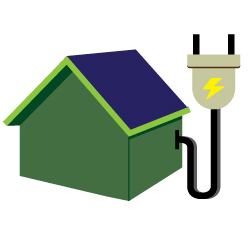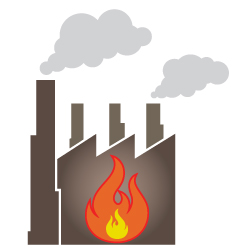San Bernardino Waste-to-Energy
Return To Projects














San Bernardino Waste-to-Energy
Location: California | Industry: | Technology: Waste-to-Energy Organic Fertilizer | Role: Owner / Operator


Turning Food Waste Into Renewable Energy
California’s SB 1383 is a bill that requires a 75% reduction (up to 27 million tons) in Organic Landfill Waste by 2025. Enforcement of the new law started in 2022, meaning municipalities and waste haulers started facing fines for landfilling organic waste earlier this year. This is where BioStar comes in.
Using anaerobic digestion, the San Bernardino Waste-to-Energy project converts pre-consumer food waste into renewable resources that not only diminish solid landfill waste, but reduce organizations’ carbon footprint, and help achieve increasing sustainability goals.
Recovered resources such as clean industrial water, organic liquid fertilizer, biogas and electricity will aid in meeting California’s requirements. BioStar’s patented backend process creates nutrient-rich, carbon-based, organic, food-grade fertilizer, all while generating renewable power, which is delivered to the Southern California Edison power grid via a utility interconnection.
Diverted waste results in significant cost savings and reduced tipping fees for haulers, food waste generators and municipalities. BioStar Renewables manages and facilitates all aspects of the process — from collection and pre-processing to digestion and generation — spearheading long-term agreements that make achieving sustainability goals a seamless reality.
HOW IT WORKS

Beginning in 2022, the San Bernardino Waste-to-Energy project will divert 93,850 tons of pre-consumer food waste from the Coachella and Lambs Canyon landfills each year. As a result, 85,000 gallons per day or 31,025,000 gallons of food waste per year will create:
21,637,200 kWh of Electricity
per year
849,000 Gallons of SuperSix™ Fertilizer
per year
18,250 Tons of Compostable Fiber
per year
19,876,800 Gallons of Clean Water
Industrial reuse per year
Greenhouse Gas Emission reductions equivalent to:
38,061,903 Miles
Avg. passenger vehicle
1,725,431 Gallons
of gasoline consumed
2,984 Homes'
Energy per year
16,965,573 Pounds
of coal burned
*Source: EPA's Greenhouse Gas Equivalencies Calculator.
PROJECT DETAILS
The City of San Bernardino is home to ~217,000 people, while San Bernardino County has a population of ~ 2.2-million people. The amount of food waste generated is significant and has put stress on the traditional methods of disposal such as landfills, composting facilities, and municipal solid waste facilities.
With recent studies indicating that approximately 36-million tons of food waste goes un-utilized and only about 3% of this food waste volume is recovered — the project will prove beneficial by creating baseload renewable energy, nutrient and carbon recovery, as well as generating valuable solids which can be composted. With the passing and now enforcement of California’s new landfill diversion law, SB 1383, waste-to-energy facilities will become increasingly important to meeting the state’s goals.
The goal of the San Bernardino Waste-to-Energy project is to provide a valuable facility for resource recovery, energy production, and financial benefits to the region by turning pre-consumer food waste into feedstock, ultimately producing beneficial products and materials.
The facility consists of three digesters, with a total liquid capacity of approximately 1.8-million gallons and additional space available for the expansion of future digesters. The methane rich biogas is fed through two, 1.3 MW engines, ultimately creating caseload renewable electricity that will provide stability to the local power grid. The exhaust from the engines is treated to meet California air quality standards as well as noise restriction requirements. Heat is recovered from the engines and recycled to maintain optimum temperatures in the digesters to maximize efficient operational conditions.
Finally, the project obtained a 2.6MW utility grid interconnect. The project is supported by a 20-year power purchase agreement (PPA) with Southern California Edison. The site layout is designed to handle additional feedstocks to further increase volume and revenue, while sending excess biogas to heat recovery or to the flare.
The below graphics outline the project’s inputs and outputs.
PROJECT PHOTOS
PROJECT SITE





